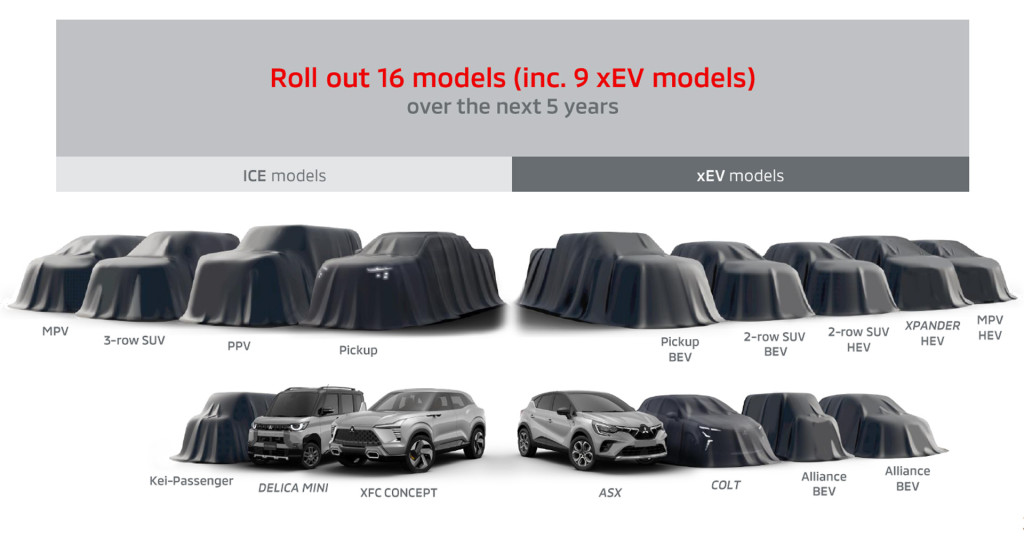Mitsubishi on Friday provided insight into a new mid-term strategy that will see the automaker launch 16 vehicles globally over the next five years, nine of which will be electrified. One of those electrified vehicles is confirmed to be an electric truck.
It's all part of the automaker's long-term goal to have electrified vehicles account for 50% of sales by 2030 and 100% by 2035. For Mitsubishi, electrified vehicles, referred to by the automaker as xEVs, include hybrids, plug-in hybrids, and electric vehicles.
The first of Mitsubishi's nine electrified vehicles has already launched overseas in the form of the ASX, which is a rebadged Captur compact crossover from Mitsubishi alliance partner Renault. It offers mild-hybrid and plug-in hybrid powertrains.
Other known entries in the new electrified fleet will include a hybrid Colt subcompact hatch based on Renault's latest Clio, and a hybrid Xpander minivan.

Mitsubishi to launch nine electrified vehicles by end of 2028
No details were mentioned concerning the pickup truck, but another of Mitsubishi's alliance partners, Nissan, has teased an electric truck and has hinted that such a vehicle is being considered for sale in the U.S. It's possible Mitsubishi's electric truck will be developed alongside a Nissan counterpart.
Despite the electrification push, Mitsubishi still plans to launch at least seven vehicles powered purely by an internal-combustion engine over the next five years. One of them debuting soon is referred to as a next-generation pickup truck, suggesting it will be a redesigned version of the Triton (L200) mid-size pickup sold overseas.
Also in the works are a new three-row SUV and a body-on-frame SUV. The latter, referred to by Mitsubishi as a PPV (Pickup Passenger Vehicle), will likely be based on the next-generation pickup and may replace the current Pajero Sport sold overseas.
To support the development of all the vehicles, Mitsubishi said it plans to increase R&D spending and capital expenditure by 30% over the next six years compared with what it spent over the past six.
